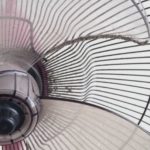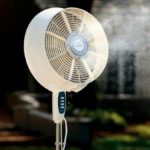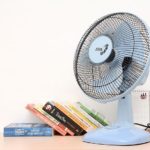Electric fans have become an indispensable part of modern life, especially during the hot summer months. With a variety of cooling options available, from pedestal fans to ceiling fans, consumers may be wondering which option is the most effective and efficient. Let’s explore the pros and cons of each type of fan and find out which one is the best choice for your needs.
1. Pedestal Fans:
Pedestal fans, also known as standing fans, are a common sight in many homes. They typically consist of a set of blades, a grill, a motor, an adjustable height axis, and a wide base for stability. When the motor is activated, the blades rotate and circulate air, providing a cooling breeze throughout the room. Pedestal fans usually offer at least three speed settings to allow for customizable cooling.
 Pedestal fans offer multiple speed settings
Pedestal fans offer multiple speed settings
Today, pedestal fans come in a variety of designs, including tower fans and desk fans. They are designed with user convenience in mind and typically consume 45W – 75W of power. On average, they will use up 1kWh of electricity over a period of 16-17 hours.
 Variety of pedestal fan designs
Variety of pedestal fan designs
2. Ceiling Fans:
Ceiling fans are a permanent fixture installed on the ceiling, unlike pedestal fans. They consist of blades, a motor, an upper and lower canopy, and a gearbox. Ceiling fans may also incorporate LED lights or chandeliers for added lighting and a decorative touch to your home. With technological advancements, some ceiling fans even feature a bladeless design with a rotating disc mechanism.
Ceiling fans are extremely energy efficient, consuming only 40W – 45W of power and using up 1kWh of electricity over a period of 12-14 hours.
 Ceiling fans can cool and decorate your home
Ceiling fans can cool and decorate your home
3. Pedestal Fan vs Ceiling Fan: Which is Better?
At first glance, it may seem that ceiling fans consume more energy due to their higher wattage. However, this is not always the case! The choice between a pedestal fan and a ceiling fan depends on your space and specific needs.
 Pedestal fan vs Ceiling fan
Pedestal fan vs Ceiling fan
If you’re looking to save space and cool an entire room, a ceiling fan is the ideal choice. With blades spanning 1.2m – 1.5m, they generate strong and consistent airflow, keeping the entire room comfortable and breezy.
 Ceiling fans create a spacious and airy atmosphere
Ceiling fans create a spacious and airy atmosphere
Pedestal fans, on the other hand, are perfect for smaller spaces such as study rooms, dorms, offices, cafes, and restaurants. While they can generate strong airflow, their cooling effect is focused on a specific area. This makes them more portable and ideal for use by one or two people.
 Pedestal fans are versatile and space-saving
Pedestal fans are versatile and space-saving
In conclusion, the best way to save energy is to choose a fan that suits your specific needs and purposes. Whether it’s a pedestal fan or a ceiling fan, placing the right fan in the right space will not only provide cooling but also optimize its performance.
We hope that this comparison between ceiling fans and pedestal fans has given you the insight you need to make an informed decision based on your personal preferences and living space.







































